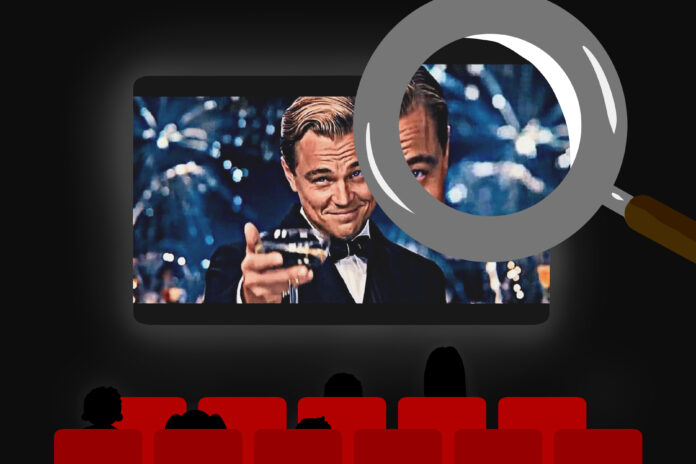Treating film as visual literature can make it more worthwhile
On the first day of my Intro to Film class, my professor said taking this class would ruin movies for us forever. No longer would we just sit back and take in the thrilling plots or gush over our favorite actors. Instead, a voice in the back of our heads would ask us to look beyond a simple glance at the shot angles, the mise-en-scène and everything in between.
Of course, my professor reassured us that we’d begin to appreciate cinema more. There was a reason why he was teaching this course and why the lecture hall was packed with eager students, even if most of them were just there to fulfill a GE requirement.
He said although we’d be intensely focused during each scene and frame, the conversations we’d have afterwards with our friends would be worth it.
Film, just like literature, can be looked at closely. It may not be alliteration or personification for which we’re looking, but if you carefully examine certain elements of film, you might find an abundance of meaning in every frame. The audiovisual elements in film are all deliberate choices made by the director, screenwriter or producer.
The first film assigned to us was Alfred Hitchcock’s “Rear Window.” On the surface, it’s about a photographer with a broken leg, investigating a potential murder in the apartment that neighbors his own. The photographer uses his camera lens, window and co-conspiring girlfriend to indict his neighbor for murdering his wife. As interesting as it already is, a closer look offers a glimpse into the Hitchcock era.
This film is overlaid with “the male gaze,” as we see the protagonist use his camera for voyeuristic glances. The camera zooms into the neighborhood “eye candy,” and we, the audience, enter the protagonist’s perverse yet candid mind. Although every female character in this film ends up defying gender stereotypes one way or another, the camera angles set us up to view things from the male perspective.
This film could have been shot from multiple viewpoints. We could have had more insight on how the protagonist’s girlfriend felt outside his apartment. There could have been a scene that actually showed the murder firsthand. There are many ways to go about a narrative, so the decisions that are made and finalized reflect the creator’s intent. Presenting everything solely from the eyes of the protagonist in his confined apartment is calculated. We need his prejudiced point of view in order to experience his beliefs be debunked alongside him.
Although some films may be more obvious with their intent, others require a brief pause or even a second viewing. For Michael Haneke’s French thriller “Caché,” historical background is important to fully understand the film, especially for non-French audiences.
The film deals with collective memory and white guilt, specifically pertaining to the Paris Massacre of 1961. There are countless scenes where news of the Iraq War is playing on the television in the background, yet none of the characters pay much attention to it. It is the subtle details that are all the more telling.
There’s one particular scene in which one of the characters commits suicide in front of the protagonist. The camera frame stays perfectly still, and the protagonist tiptoes around the dead body, at one point leaving the frame completely. The shot does not move, and instead, the audience sees the dead body by itself in a pool of blood.
Given that the film deals with guilt over colonialism, this choice is particularly significant. The French protagonist is physically stepping out of the frame of a dead Algerian man. The film never overtly states that the protagonist feels at fault, but this shot composition encompasses the film’s overarching theme of guilt..
By all means, movies are capable of much more than quick entertainment. We might roll our eyes at the dry symbolism of blue curtains, but it is still interesting to ponder what they might mean — even if they don’t mean anything at all.
Written by: Julietta Bisharyan — jsbisharyan@ucdavis.edu
Disclaimer: The views and opinions expressed by individual columnists belong to the columnists alone and do not necessarily indicate the views and opinions held by The California Aggie





